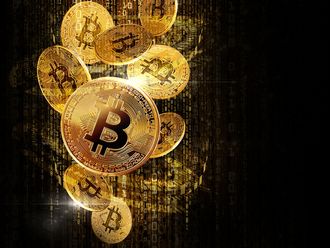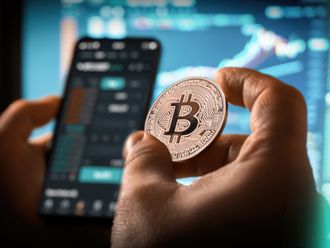
Before FTX Co-Founder Sam Bankman-Fried made the Bahamas synonymous with the crypto crash, the country was known as a pioneer of digital fiat.
In 2020, the island nation launched the world's first central bank digital currency, or CBDC, called the Sand Dollar.
But two years after the Sand Dollar's debut, adoption has been sluggish. And the FTX debacle isn't helping.
Kimwood Mott, the project manager for digital currency implementation at the Central Bank of the Bahamas, blames the slow start on the pandemic. Covid-19 shut down the country for months, limiting the government's ability to teach people what the Sand Dollar is, and isn't.
"I am always telling people that this is not a cryptocurrency," Mott said. "But if people don't know what a cryptocurrency or a CBDC is, then I'm just making a statement."
The Sand Dollar is a digital version of the Bahamian dollar "- fully backed by the government and pegged to the US greenback "- that can be sent and received over a mobile phone for free.
Boosters believe the Sand Dollar could solve an array of problems: pull the unbanked into the financial system, make rival digital payment platforms interoperable by giving them a common unit of exchange, and maybe even save lives "- allowing the government to wire emergency funds to people isolated in the wake of a hurricane.
But people have to use it first.
Kendric Dames, a 44-year-old barber in Nassau, is a Sand Dollar evangelist. He likes it because, unlike credit card transactions, there are no fees, and the less physical cash he has on hand the safer he feels. But despite offering a crash course on e-money to anyone who sits for a haircut or a shave, only about 1% of his clients are using the digital fiat.
"A lot of people still think it's a crypto and that's holding them back," he said. "Everyone who gets in this chair I try to educate them."
Central banks around the world have been exploring CBDCs as a way to speed up global transactions and thwart the rise of cryptocurrencies that have the potential to squeeze out fiat currencies. While more than 20 nations are now piloting their own digital fiat, according to the Atlantic Council, many more are on the sidelines "- waiting to see if experiments like the Bahamas will succeed at all.
As a result, the Central Bank of the Bahamas is stepping up its education efforts. In October, it promoted a wine and food festival where the Sand Dollar was the only form of payment, producing a notable spike in national usage, Mott said. It's also working with private digital wallet providers to target niche populations.
Island Pay, for example, is rolling out a Sand Dollar digital wallet aimed at the 6 million tourists who visit the country every year, giving visitors the chance to hit the streets of Nassau with nothing more than their mobile phones. Island Pay CEO Richard Douglas says the company hopes to onboard 1,000 merchants and 100,000 tourists in 2023.
While those initiatives are working, there's no denying "the FTX effect," Mott said. While most Bahamians didn't have money in the exchange, which moved to the Bahamas in 2022 amid much fanfare, the negative publicity surrounding its demise has only fueled e-money skepticism.
The problem isn't unique to the Bahamas. The Eastern Caribbean Central Bank "- which launched the world's first CBDC within a currency union just months after the Bahamas "- and Nigeria, Africa's largest economy, are also struggling to get people to use e-money.
On a recent weekday, Dames was showing a client at his barbershop how easy it is to transfer Sand Dollars from his phone to his bank account with just a few clicks.
The man in his chair, Nigel Hepburn, was unimpressed.
"I try to stay away from the phone, it kind of limits personal interaction," Hepburn said. "Everything is a whole lot easier with cash."







_resources1_16a4a1613d8_small.jpg)


